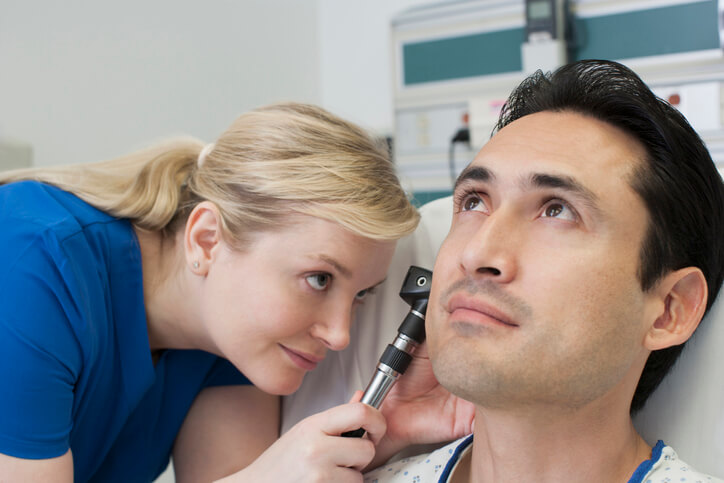Let’s Talk About Wax. Earwax!
6 years ago | Proactive Health
By Joy Stephenson-Laws, JD, Founder
The following story is not for the squeamish.
An audiologist (which is a doctor who specializes in balance and hearing problems) in Leicestershire, England removed a clump of earwax (cerumen) from a patient that was so large it clogged up the entire ear canal!
Fortunately, despite the amount of buildup, the patient’s eardrum remained “intact and healthy,” according to one report.
How did this happen?
Well, we don’t know for sure. The patient choose to remain anonymous, and we don’t know the exact cause of the buildup or patient information regarding age, gender, etc.
But according to Cedars-Sinai, earwax buildup (also called impacted earwax) can occur when your ear makes earwax faster than your body can remove it. This can happen due to having certain health conditions such as:
- Bone blockage. For example, osteoma is a noncancerous bone tumor that can cause blockages.
- Certain infectious diseases, such as “swimmer’s ear,” medically known as otitis externa.
- Skin disease, such as eczema. “Your ear canal is lined with skin, so eczema and psoriasis may also show up there,” said one doctor, in this report. This could cause a buildup of earwax.
- Autoimmune disease, such as lupus.
- Narrowed ear canal (from birth, chronic inflammation or injury)
- Injury, such as trauma to the ear or head.
Having impacted earwax may cause hearing problems, irritation, pain and ringing in the ears and dizziness. And to my surprise, the report discussing the patient with the massive earwax buildup says that seeking medical help to remove earwax is one of the most common otolaryngology (dealing with the ears, nose and throat) procedures in the United States.
So here are some things you should know about earwax.
- Earwax has a beneficial purpose.
“Earwax, a bodily emanation that many of us would rather do without, is actually pretty useful stuff — in small amounts. It's a natural cleanser as it moves from inside the ear canal outward, gathering dead skin cells, hair, and dirt along the way. Tests have shown that it has antibacterial and antifungal properties. If your ears don't have enough earwax, they're likely to feel itchy and uncomfortable,” according to Harvard Health.
So this concept that having earwax is gross and makes our ears dirty is certainly not true.
- At home, earwax should not be removed with a cotton swab or other object (such as a bobby pin).
Doing this can actual make earwax buildup worse by pushing the wax further into the ear canal. It could also cause punctured eardrums and ear infections.
Harvard suggests the following: “Instead, soak a cotton ball and drip a few drops of plain water, a simple saline solution, or hydrogen peroxide into the ear with your head tilted so the opening of the ear is pointing up. Keep it in that position for a minute to allow gravity to pull the fluid down through the wax. Then tilt the head the other way and let the fluid and wax drain out. You can also use a bulb syringe to swish out the ear.”
There are also over-the-counter ear drops you can use that will help break up earwax, but the general rule of thumb is to not stick anything into your ear! Your ears are self-cleaning, so you really shouldn’t need to remove earwax often unless you have a condition that causes you to produce more earwax. And if that’s the case, seeking the advice of a competent healthcare professional is always recommended.
- Earwax and nutrition. There is a connection.
As funny as this may sound, there is a connection between earwax and nutrition. Earwax is acidic, which probably explains why it has some antibacterial properties.
“Researchers have found that the earwax of people with diabetes is less acidic than that of people without the disease, a difference that may help explain why some people with the disease are prone to ear infections,” says Harvard.
A poor diet lacking in essential nutrients may cause excessive weight gain which may lead to diabetes. Diabetics may produce less acidic earwax, which may lead to more ear infections. So as you can see, there is a connection between what you eat and earwax.
Do you hear me?
If not, get the excess wax out of your ears and let’s learn to live our healthiest and happiest lives!
Enjoy your healthy life!
The pH professional health care team includes recognized experts from a variety of health care and related disciplines, including physicians, attorneys, nutritionists, nurses and certified fitness instructors. This team also includes the members of the pH Medical Advisory Board, which constantly monitors all pH programs, products and services. To learn more about the pH Medical Advisory Board, click here.







